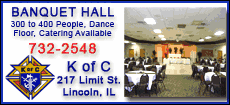| ||||||||
| ||||||||
Skillfully constructed as a series of narrative vignettes, "Unholy Business" is indeed reminiscent of a good, if rather dark film. Burleigh has a marvelous talent for thumbnail character sketches and many of her protagonists seem to leap off the page
-- from the slippery yet charming Golan to an elderly collector named Moussaieff, who wants to prove the Bible literally true, to a diminutive Israeli epigrapher known as Ada, who deciphers ancient inscriptions for the world's most important antiquities dealers. For all its good points, "Unholy Business" is not a deep book. You won't learn much about archaeology or ancient cultures by reading it. And Burleigh's lack of any specialized background in her subject is at times problematic. Notably, she seems unable to describe or analyze the formal qualities of the artifacts at the center of the story. Indeed, it is very difficult to visualize them without referring to the section of photographs in the middle of the book. Likewise, her writing style is nothing if not exuberant: The pages turn and the narrative zips along, but there are many passages where the prose goes for baroque in a way that is difficult to admire. A sunset is "a primal kaleidoscope in the heavens." The antiquities trade is "a death match between reason and superstition, monitored by laughing commerce." Still, "Unholy Business" spins a good yarn. It offers a window onto a world about which few of us know very much, and although it isn't likely to become the definitive book on the James ossuary or the larger subject of forged antiquities, it's an entertaining and worthwhile read.


[Associated
Press;
Copyright 2008 The Associated Press. All rights reserved. This material may not be published, broadcast, rewritten or redistributed.
News | Sports | Business | Rural Review | Teaching & Learning | Home and Family | Tourism | Obituaries
Community |
Perspectives
|
Law & Courts |
Leisure Time
|
Spiritual Life |
Health & Fitness |
Teen Scene
Calendar
|
Letters to the Editor